Standing Half Forward Bend Pose, Upward Forward Fold Pose, or Ardha Uttanasana in Sanskrit (‘Ardha’ means ‘half’, ‘Uttana’ means ‘intense stretch’, and ‘asana’ means ‘posture’) is a beginner to intermediate yoga pose. In this yoga pose, the upper body is bent forward to the extent that it remains almost parallel to the floor. This is the half position between bending completely down and standing tall. Therefore, this pose makes it easier for the practitioner to achieve the deep stretch that enhances the range of body movements.
Beginners Yoga For Upper And Lower Back Pain Relief
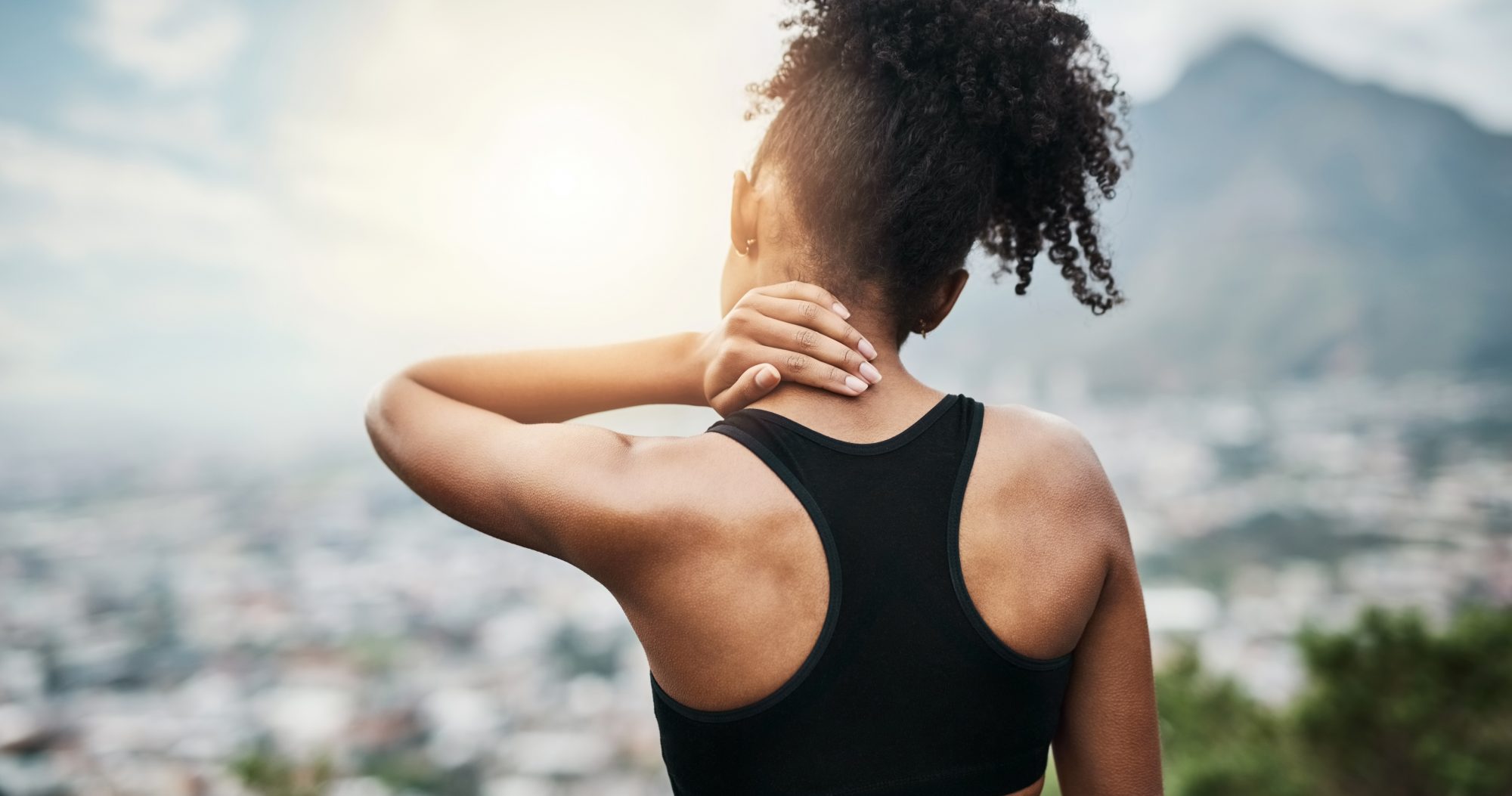
As we get older and take some of the stress that life throws our way, we become susceptible to pains and bruises that radiate throughout the body. One of the most common complaints among older people is back pain and while this can be caused by a variety of reasons, yoga is the perfect proactive form of exercise to alleviate back pain. Aside from alleviating the pain in certain areas of the back, yoga can strengthen weak muscles located along the spine. The strengthening of these muscles can lead to a reduced risk of back pain. In the following article, we aim to give you a complete yoga for back pain beginners guide, including all the benefits and poses to strengthen muscles and alleviate pain.
Advantages Of Practicing Yoga For Your Back And Neck
Once we experience back pain, we often neglect to act or simply brush it off as something that will pass. Eventually, back pain might become more severe, which leads many people to consult a medical expert. We still encourage the use of medical experts like chiropractors, but for neck and back pain, there are a few distinct advantages that yoga brings to the table:
- Scientifically Proven. A 2011 study conducted has shown that there is a correlation between yoga and curing chronic lower back pain. The America Pain Society has also found that performing light forms of yoga can lead to a reduction in chronic lower back pain while strengthening muscles at the same time. Keep in mind that no pharmaceutical additives were used.
- Stress Relief. One of the first areas to tense up in your body is your neck. Tension in the neck muscles can be caused by incorrect sleeping positions, but daily stress is a big contributor to causing tension in the neck muscles. Yoga aims to stretch muscles, relieving some of the tension in your neck and upper back. This translates to ultimate stress relief, which leads to a healthy lifestyle.
- Cheaper Than A Physiotherapist. Neck and back pain can often book you a one-way ticket to your GP. The GP will inevitably refer you to a physiotherapist or chiropractor to help alleviate some of the pain. Should the pain be manageable, you might want to consider the benefits of yoga to help relieve some of the pain. Yoga is cheaper while having many other benefits including weight loss and overall flexibility.
- A Habit That Becomes A Lifestyle. Yoga should not be a “one and done” form of exercise. With all the mental and health benefits associated with performing yoga, you should consider sticking to your chosen form and making it a lifestyle. Once you establish a healthy lifestyle, you will alleviate more than just pain, but also be happier in your general life.
Yoga For Back Pain Benefits
Having a better idea of how yoga can improve your life and rid your body of niggles, you might also want to know some of the benefits you can expect from performing yoga for back pain. Yoga is an age-old method of helping people deal with mental and physical issues, while also helping to build muscles and lose weight.
Beginners Yoga For Upper Back Pain
Should you find yourself with upper back pain, you might have trouble sleeping or walking in the right positions. However, many yoga exercises can help you deal with it. You don’t need to focus on the fast-paced action of Vinyasa, which could aggravate the issues. Here is a small guide to alleviating upper back pain with yoga.
- Early Morning: It is best to start your mornings early. Once you get out of bed, you will want to stretch out your muscles, including your neck and lower back. Marjariasana and Bitilasan are two effective methods of identifying any pain along your spine.
- During The Day: During the day, your pain should not be as bad and your back should be warm. However, there is no harm in doing a few back stretches when you can at the office or when strolling to your lunch break.
- At Night: Eventually, you will notice less stress in your upper back, but you should still perform a few yoga-breathing exercises. These will not only alleviate your pain but also give you a healthy mindset.
Beginners Yoga For Lower Back Pain
While upper back pain is directly tied to the neck, lower back pain is one of the most frustrating issues anyone can deal with. One of the main reasons for lower back pain is undeveloped muscles, which take a lot of strain during daily activities. One of the best ways to alleviate back pain is to strengthen the muscles around the spine.
- Early Morning: Much like with your upper back, it is best to stretch out the muscles and warm them up first thing in the morning.
- During The Day: Physical activity is important to allow you to strengthen your lower back. Instead of taking the elevator, you can take the steps to strengthen your back.
- At Night: While you can perform much active yoga poses like Vinyasa, you might also want to consider a few basic lower back stretches to improve the muscle strength down your spine.
Yoga Poses For Back Pain For Beginners
With a few basic tips that should help you with your lower and upper back pain, you might also be wondering which poses are the best for back pain. We have done some research to find a few of the top poses that the experts recommend to alleviate back pain. Many of these poses also help with strengthening the back muscles:
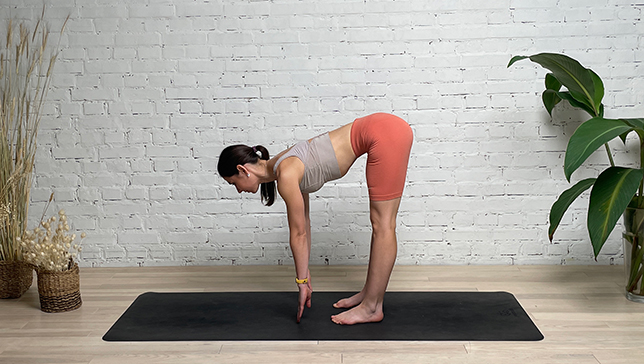
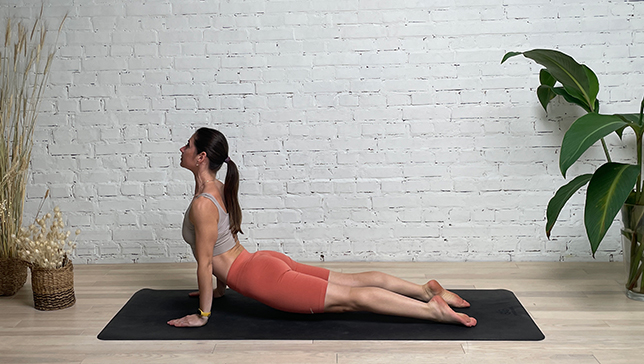
Upward Facing Dog Pose or Urdhva Mukha Svanasana in Sanskrit (‘urdhva’ = ‘ ‘upward’, ‘mukha’ = ‘face’ and ‘svan’ = ‘dog’ 'asana'= 'pose').is a backbend pose that stretches the chest, shoulders, and spine, while also strengthening the arms, wrists, and back muscles. Upward Facing Dog Pose pose is similar to Bhujangasana or the Cobra Pose, the only difference being, that in Cobra Pose the entire lower body touches the floor making a deep backbend and in Upward Facing Dog Pose the lower body from hips to ankles is just above the floor. Therefore, the strength of the arms and shoulders is really important in this position. Upward-Facing Dog Pose is considered a base pose for upward-facing dog pose variations. Urdhva Mukha Svanasana helps boost energy in the body and hence can be included in different yoga sequences.
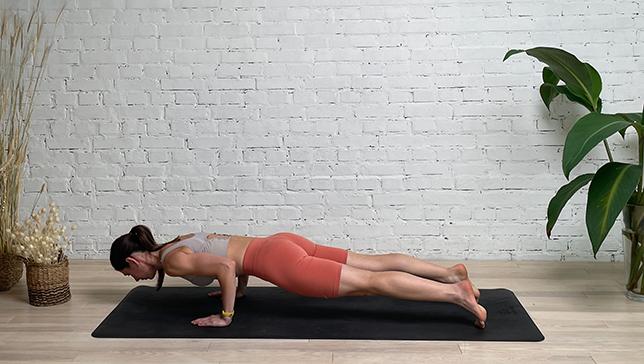
In Four Limbed Staff Pose or Chaturanga Dandasana in Sanskrit (‘Chatur’ means ‘four limbs’, ‘Danda’ means ‘staff of support’ and ‘Asana’, means ‘posture’), staff is referred to as the spinal cord, which is the main support system of the body. This pose is one of the steps in the group of 12 yoga poses in Surya Namaskar (Sun Salutation) and is considered a powerful strength builder in the arms and abs. It also helps boost energy in the body and hence can be included in flow yoga sequences.
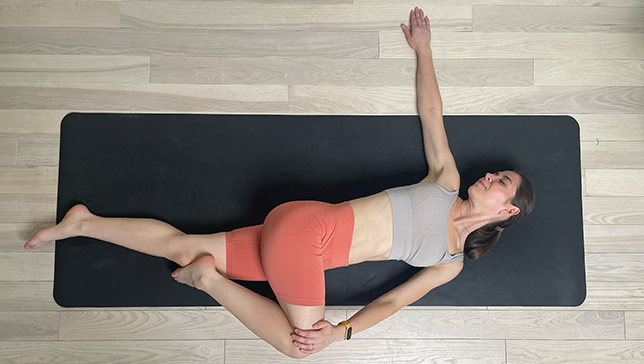
Supine Spinal Twist Yoga Pose I or Supta Matsyendrasana in Sanskrit (‘supta’ = ‘recline’, ‘matsya’ = ‘fish’, and ‘endra’ = ‘refers to Lord Indra the ruler’). The name Matsyendra, here refers to the lord of the fishes, and this pose depicts the pose Ardha Matsyendrasana in the supine version.
This pose is a great twist to the spine and the abdomen and hence is also referred to as the abdominal twist pose.
Supine Spinal Twist Yoga Pose I helps to stretch and release tension in the spine, hips, and lower back. It can be used both as a stand-alone pose and as compensation after backbends and core-strengthening yoga poses.
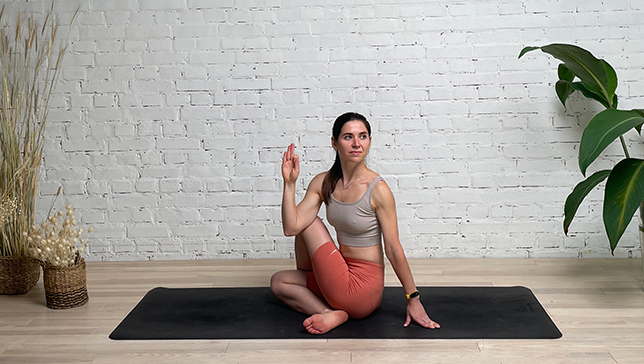
Half Lord of the Fishes Pose or Ardha Matsyendrasana, is named after the great yogi Matsyendranath who founded Hatha Yoga. The English name, Half Lord of the Fishes Pose, comes from the Sanskrit words 'ardha' = 'half', 'matsya' = 'fish', 'eendra' = 'king'. This yoga pose has other variations and can be referred to as Half Spinal Twist Pose or Vakrasana (which means twist).
This yoga pose usually appears as a seated spinal twist with many variations and is one of the twelve basic yoga poses (asanas) in many systems of Hatha Yoga. In this yoga pose the spine gets its maximum twist at the upper back with the thighs placed over each other and with the support of the arms the torso gets its twist.
20 Minutes Yoga Flow To Release Lower Back Pain
Lower back pain can be a common issue for many people, but incorporating yoga into your daily routine can help to alleviate discomfort and tension. Here are 12 yoga poses that can help to relieve lower back pain:
- Cat/Cow Pose: This gentle flow involves arching and rounding your spine, which can help to release tension in your lower back and increase flexibility.
- Downward Facing Dog Pose: This pose stretches the hamstrings and calves while also strengthening the back muscles, helping to alleviate lower back pain.
- Extended Triangle Pose: This pose stretches the hips and hamstrings, while also providing relief to the lower back muscles.
- Sphinx Pose: This pose strengthens the lower back muscles and stretches the spine, relieving tension and discomfort.
- Cobra Pose: This pose strengthens the back muscles while also providing a gentle stretch to the lower back.
- Locust Pose: This pose strengthens the muscles in the back of the body, including the lower back muscles, and can alleviate tension in the area.
- Bridge Pose: This pose stretches the chest, neck, and spine while also strengthening the back muscles, providing relief to the lower back.
- Forearm Plank: This pose strengthens the core and back muscles, which can help to alleviate lower back pain caused by weakness or instability.
- Half Lord of the Fishes Pose: This seated twist stretches the spine, hips, and shoulders, which can help to release tension in the lower back.
- Supine Spinal Twist: This gentle twist stretches the muscles of the back and hips, promoting relaxation and reducing pain.
- Child’s Pose: This pose stretches the lower back and hips while also providing a calming and relaxing effect on the body and mind.
Finalize this beautiful sequence with Corpse Pose. It will allow the body and mind to fully relax and release any tension or stress, promoting overall well-being and reducing pain.
Incorporating these 12 yoga poses into your daily routine can help to reduce lower back pain and improve your overall health and well-being. As always, it’s important to consult with your healthcare provider before beginning any new exercise program, particularly if you have pre-existing medical conditions or injuries.
Wrap-Up
Your back is one of the most important parts of your body and keeping it in the best possible condition will ensure overall health. Yoga is a great way to alleviate pain in your back, but it also prevents pain from starting in the first place. Keep in mind that yoga should be performed actively and lead to an overall healthy lifestyle if you want to reap all the rewards.
Frequently Asked Questions
Unless you are a medical expert, it is best to visit your GP to find out exactly what the issue is. While yoga can relieve some of the pain, it is not necessarily used to diagnose the origin of your pain.
Most forms of yoga are equally effective and it comes down to personal preference. Many people swear by Vinyasa as an active form, but Iyengar Yoga is also one of the best ways to strengthen your back muscles.
To find out if your back pain is muscular, we would recommend that you visit your local doctor for an accurate diagnosis. While you can diagnose it at home, experts can help you with a clear diagnosis to ensure you have the right way to heal. A few signs of muscular back pain include difficulty walking, muscle spasms, and pain in your buttocks from your spine.
There is a lot of speculation about the pillow between the knee sleeping posture. However, you will keep your legs in the same position, which keeps the upper leg from pulling your spine out of position. While it might not alleviate back pain, it can certainly prevent it.
Stay on Topic
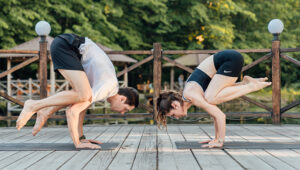
A majority of those who practice yoga do it as an individualistic practice and gain...

Starting your day off by connecting your body and mind is the most energizing and...

When you think of yoga, the first thing that probably comes to your mind is...
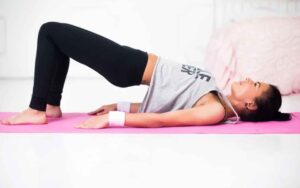
Yoga for back and neck pain can help many people who suffer from tension. It...


